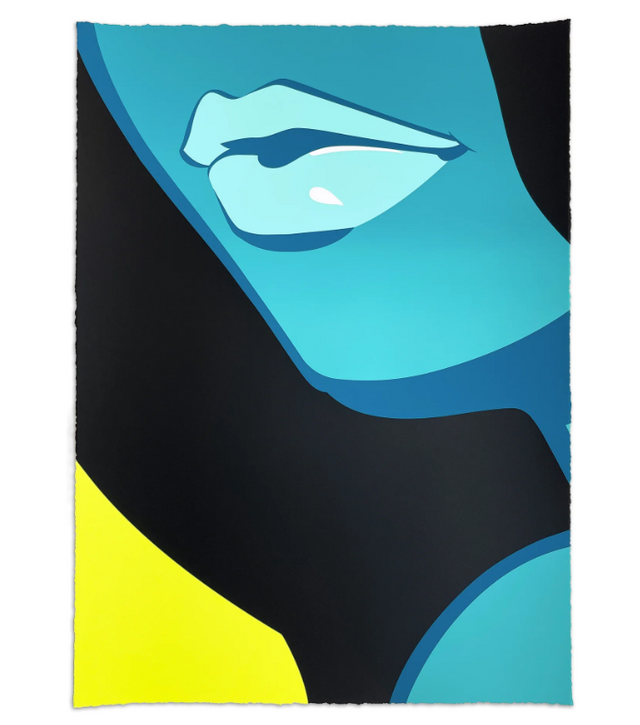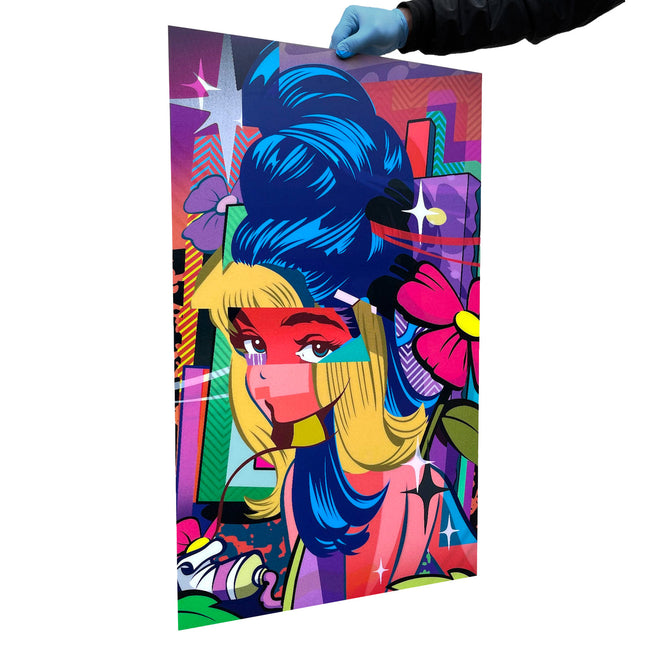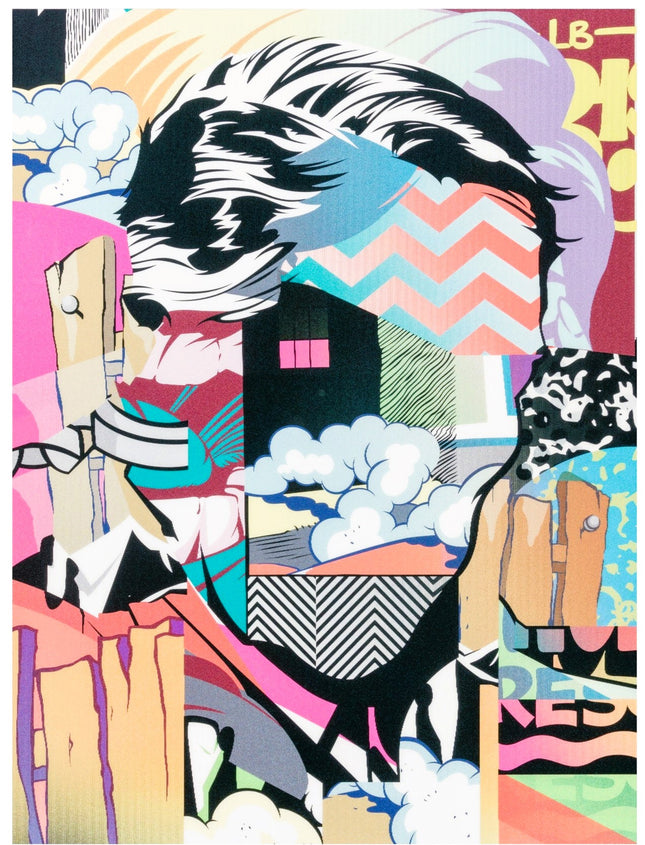
Hair
-

Pose- Jordan Nickel Dollie XL Lenticular Print by Pose- Jordan Nickel
Dollie XL Lenticular Print by Pose- Jordan Nickel Hand-Pulled 3 Phase Holographic Like Deckled Paper Limited Edition Artwork. 2021 Signed & Numbered Limited Edition of 50 Artwork Size 22.5x36 Lenticular Changing Print That Shifts Colors Across A Woman With Large Bee Hive Hair Cut. Pose, or Jordan Nickel, further establishes his position in the contemporary art world with his groundbreaking work titled "Dollie XL Lenticular". Evoking a sense of nostalgia while pioneering modern techniques, Pose demonstrates a mastery of pop and street art traditions, encapsulated within this transcendent artwork. Spanning a generous 22.5 x 36 inches, "Dollie XL Lenticular" is a limited masterpiece with only 50 pieces available, each bearing the signature of the artist, attesting to its authenticity. Crafted in 2021, the lenticular print technique employed offers a dynamic visual experience. Depending on the viewer's position, the optical colors shift, creating a mesmerizing, almost holographic effect. Central to this play of color and light is an arresting depiction of a woman characterized by her voluminous beehive hairstyle, an iconic symbol that has transcended time and resonates with pop culture aficionados. One of the standout features of this artwork is its deckled edges, which give the print a raw, tactile feel, further adding to its uniqueness. Accompanying each piece is a Certificate of Authenticity, a seal of the quality and genuineness of the work, ensuring collectors and art enthusiasts of their acquisition's value. In "Dollie XL Lenticular", Pose seamlessly blends historical motifs with innovative art techniques, crafting a piece that both pays homage to traditional pop and street art while signaling the future of these genres. The work stands as a testament to the enduring and evolving nature of visual expression, ever resonant and ever-evolving.
$2,347.00 $1,995.00
-

Pose- Jordan Nickel Gent Lenticular Print by Pose- Jordan Nickel
Gent Lenticular Print Art on Thick Fine Art Paper by Pop Street Artist Pose- Jordan Nickel Limited Edition Artwork. 2021 Signed & Numbered Limited Edition of 50 Artwork Size 22.5x30 (76.2 x 57.2 cm) Holographic Color/Image Changing Lenticular Illusion Print. POSE (Jordan Nickel). 3-phase flip lenticular print 33mil 40lpi PETG lens. "I have been painting in the streets for nearly 30 years and have always strived to mirror my studio work in ways that reflect the ever-changing nature of how my work exists outdoors and in the wild. Only with time do colors change, textures multiply, and rich bits and pieces culminate into a deeper story. I aim for my work to be interactive, so I was thrilled to work with a process such as lenticular printing. It gave me the tactical ability to express the street's fluidity through the shifting of color, texture, and form" -Pose- Jordan Nickel The Dynamic Fusion of Street Art and Optical Play in Pose's "Gent" Lenticular Print The "Gent" lenticular print by Pose, the artistic moniker of Jordan Nickel, is a limited edition artwork that exemplifies street art sensibility's dynamic fusion with pop art's optical playfulness. This 2021 creation, signed and numbered, is limited to a series of 50, measuring 22.5x30 inches and printed on thick fine art paper. It is designed to captivate with its holographic color and image-changing lenticular illusion. Pose's work is deeply rooted in the ethos of Street Pop Art & Graffiti Artwork, drawing from his experience as a graffiti artist and his evolution into a pop street artist whose works are recognized for their vibrant palette and complex layering. The "Gent" print represents Pose's ingenuity, showcasing a lenticular technique that allows the image to shift and change as the viewer's perspective alters. This interactive element of the artwork invites onlookers to engage with the piece actively, experiencing the transformation of colors and form and discovering new facets and details from different angles. The lenticular print bridges the static and dynamic, a canvas that offers a different narrative with each viewing, much like the ever-changing landscape of the streets that inspire Pose's art. Reflections of Urban Life and Culture in Pose's Art In "Gent," Pose reflects the pulsating energy of urban life and culture, with elements that seem to emerge and recede into the background, echoing the fleeting nature of street art. The print is a vibrant collage of abstracted figures, shapes, and letters, reminiscent of graffiti's visual language yet reinterpreted through a contemporary lens. The artwork resonates with the graffiti tradition of tagging and stylized writing but elevates these elements through sophisticated artistry and production techniques. Pose's choice to employ lenticular printing in "Gent" his ongoing exploration of art's potential to surprise and engage audiences. The lenticular effect adds a physical dimension to the artwork suggests a metaphor for the multiple perspectives and experiences that define city life. Just as a city reveals different aspects of itself at different times and from different viewpoints, "Gent" offers an ever-shifting visual experience that challenges the viewer's perception and invites repeated exploration. In essence, the "Gent" lenticular print by Posecelebrates reflects the dynamic interplay between street art's raw energy and the sophisticated techniques of modern art production. It is a piece that captures the spirit of contemporary street pop art and graffiti artwork, offering a complex and engaging visual experience that reflects the multifaceted nature of urban culture. Through works like "Gent," Pose continues to push the boundaries of street art, securing his place as a leading figure in the genre's evolution.
$1,917.00 $1,629.00



